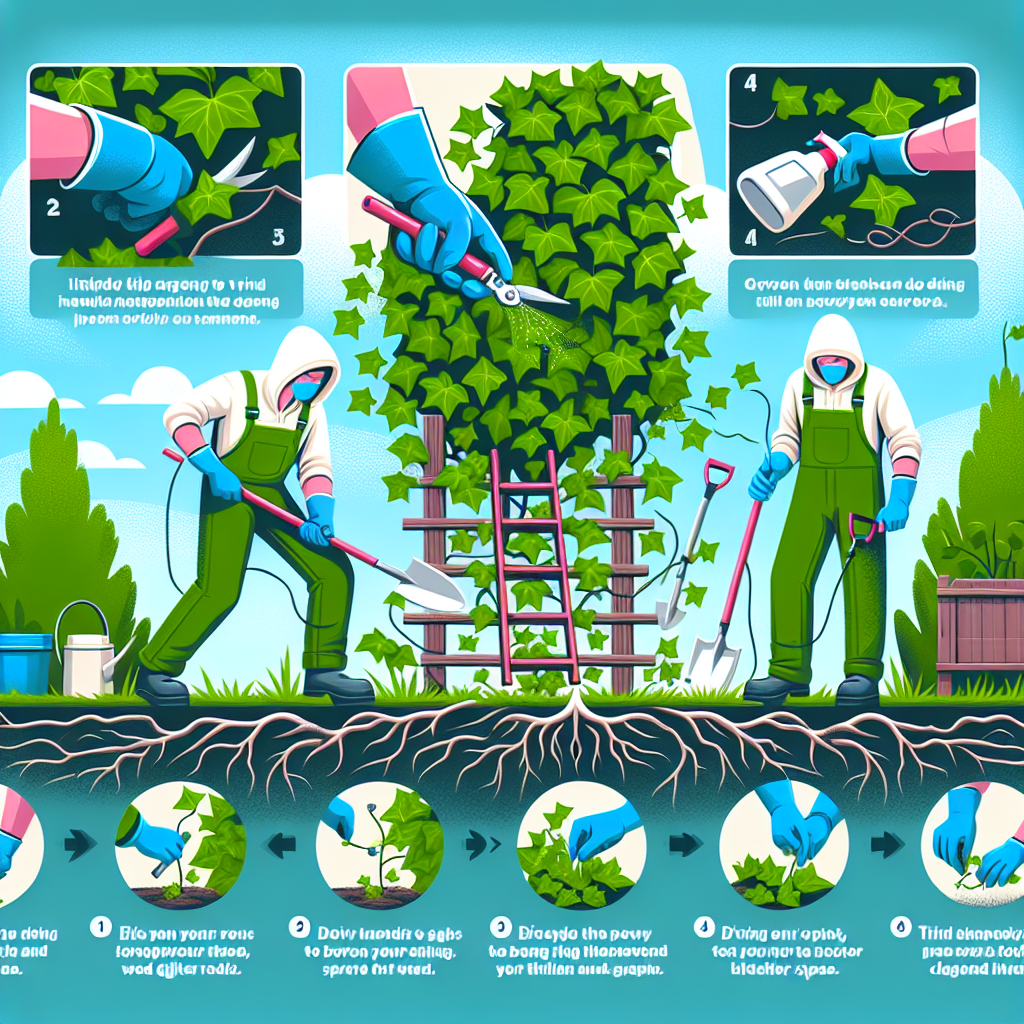
How do you kill ivy
Understanding Ivy: The Good and The Bad
When you think of ivy, you might picture a picturesque wall covered in vibrant green leaves. Indeed, ivy (Hedera helix) can add beauty and character to your gardens and landscapes. However, it is essential to recognize that while ivy can be attractive, it can also become highly invasive, leading to damage on structures and choking out neighboring plants. This article explores effective methods for managing this rampant natural beauty, answering the question: how do you kill ivy?
Why Manage Ivy?
Ivy is known for its rapid growth and adaptability to various environments, often thriving in less than ideal conditions. Unfortunately, this can lead to several issues:
- Structural Damage: Ivy can damage buildings and fences by penetrating cracks and crevices.
- Environmental Impact: It can outcompete native flora, disrupting local ecosystems.
- Allergies: The pollen produced by ivy plants may trigger allergies in some individuals.
- Maintenance: Ivy can require significant maintenance, especially if it grows uncontrollably.
Understanding these reasons can underscore the importance of managing ivy growth even while appreciating its aesthetic qualities.
Methods to Control Ivy Growth
1. Manual Removal
One of the most straightforward ways to tackle ivy is through manual removal. This method is labor-intensive but can be effective if done correctly. Here’s how to approach this task:
- Preparation: Wear gloves and long sleeves to protect yourself from skin irritation.
- Plan Your Attack: Assess the area and develop a strategy for tackling dense patches of ivy.
- Digging Out Ivy: Use a garden spade to dig up the roots, ensuring you get as much of the plant as possible.
- Destroy The Clippings: Avoid composting ivy clippings as they can root and lead to further infestations.
Manual removal is most effective in small to medium-sized patches and can be a satisfying way to restore areas taken over by ivy.
2. Cutting Back Ivy
If the ivy is well-established and deeply entrenched in a particular area, cutting it back might be more manageable. Here’s how to do it correctly:
- Choose the Right Time: Late winter or early spring is the best time for trimming ivy.
- Use Clean Tools: Ensure your cutting tools are clean and sharp to promote healthy cuts.
- Cut at the Base: Cut ivy back to the ground level to prevent regrowth.
- Monitor Growth: Pay close attention to the area, as it may require regular maintenance.
Cutting back ivy can be an admirable short-term solution but might not be sustainable long-term unless coupled with other methods.
3. Herbicide Application
For more invasive ivy infestations, applying herbicides can be a viable option. Follow these guidelines for effective herbicide use:
- Select The Right Herbicide: Look for glyphosate or triclopyr, effective for controlling ivy.
- Apply Timely: Herbicides should be applied during active growth, usually in spring or summer.
- Follow Instructions: Follow the manufacturer’s instructions carefully to avoid harming desirable plants.
- Protect Surrounding Flora: Use a shield while spraying to avoid drift onto other plants.
While herbicides can be effective, they should be used judiciously to minimize environmental harm and potential effects on nearby plants.
Preventing Ivy Regrowth
1. Regular Maintenance
To prevent ivy from reestablishing itself after removal, regular maintenance is crucial. Here are effective strategies to consider:
- Frequent Inspections: Regularly check areas previously affected by ivy to catch any new growth early.
- Mulching: Apply mulch in problem areas to suppress ivy and other weeds.
- Soil Management: Improve soil health, as healthier soil can foster the growth of native species, outcompeting ivy.
- Use Barriers: Consider placing barriers underground to prevent creeping roots from reentering certain areas.
By incorporating these maintenance practices, you can significantly reduce the likelihood of ivy returning to your garden.
2. Foster Competing Plants
Encouraging the growth of native plants can be an efficient way to suppress ivy. Here are some options:
- Opt for Hardy Perennials: These plants can compete effectively with ivy for resources.
- Consider Ground Covers: Native ground covers can occupy the space and deter ivy.
- Transform the Area: Create more open spaces, making it less favorable for ivy to grow.
By fostering native plant species, you can create an ecosystem that naturally suppresses ivy growth.
Conclusion
In summary, dealing with ivy can be a challenging endeavor, but with the right approach, control can be achieved. Whether through manual removal, cutting back, or applying herbicides, there are multiple methods to consider depending on the scale of your ivy infestation. Once managed, employing regular maintenance and promoting competing plants will provide long-term solutions to keep ivy at bay. Ultimately, by understanding how do you kill ivy, you can create a healthy, thriving garden that enhances the beauty of your surroundings while minimizing the ecological impact of invasive species.
"Managing invasive species, like ivy, is not just about aesthetics; it's about preserving the integrity of our local environments." - Environmental Scientist
By Guest, Published on September 19th, 2024